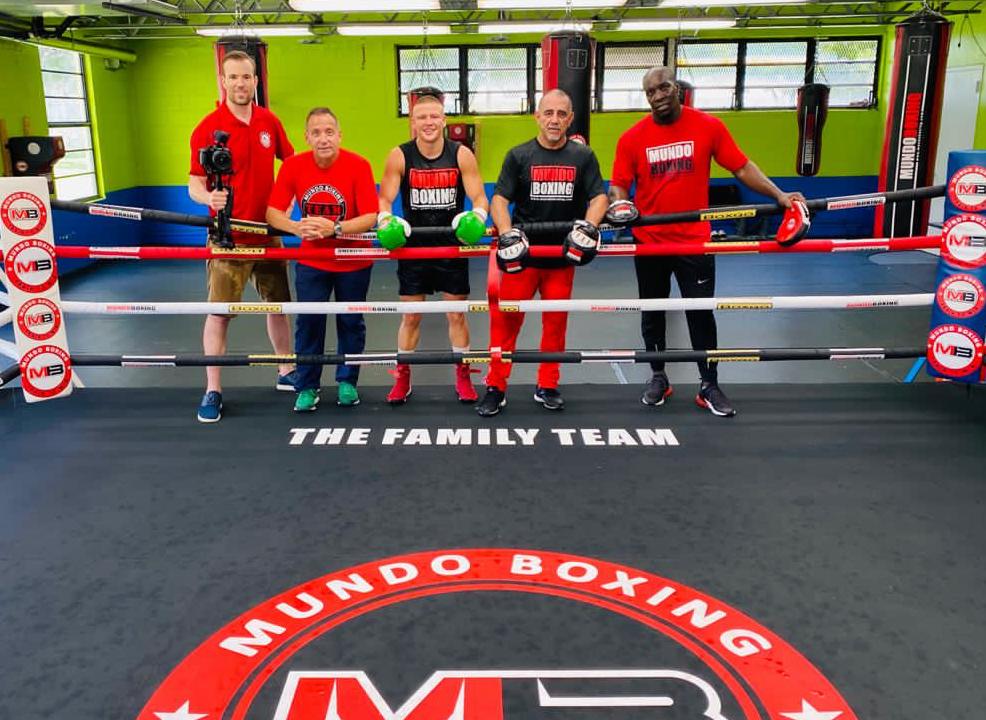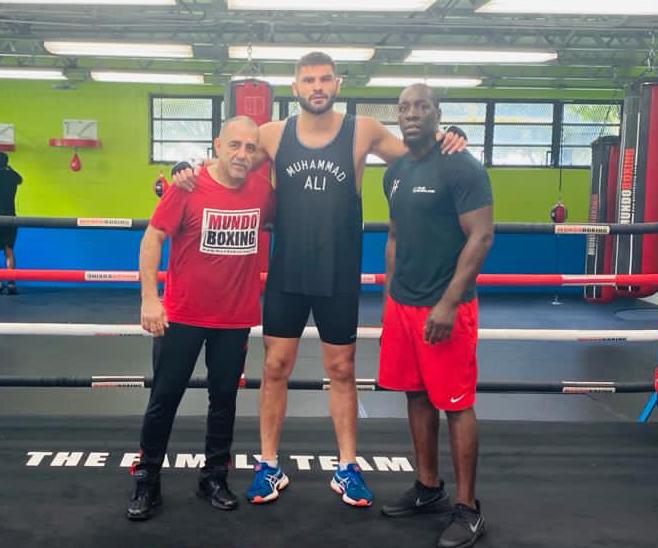“The best form of saying is being.” – Ernesto ‘Che’ Guevara.
The Mausoleo del Che Guevara, with its imposing 22-foot tall bronze statue of the revolutionary, draws tourists from all corners of the world to Santa Clara, Cuba.
Guevara was a man of action – not composed of baseless scrolls containing wishful, empty propaganda.
Historic pillars wrapped in elegant floral cornicing hold up bright, tropical-coloured buildings on the busy streets of the Boulevard shopping district. Santa Clara has traditionally been a breeding ground for baseball’s stars of the future, with a number of locals eventually featuring for top MLB teams.
In Cuba, however, boxing features inherently in the DNA of its locals.
The island’s fifth most populous city was the birthplace of former welterweight world champion, Benny ‘Kid’ Paret. A celebrated winner, Paret was only 25-years old when he tragically lost his life 10 drawn out days after suffering a violent defeat at the hands of Emile Griffith.
It was also home for Dr. Pedro Luis Diaz, one of the sport’s most respected and enigmatic head trainers.
Diaz introduced himself to professional boxing’s audience when working with Miguel Cotto almost a decade ago, reportedly striking panic into the camp of Floyd ‘Money’ Mayweather. Journalist Kevin Mitchell described the Cuban trainer as “the quiet elephant in the room” during that particular fight week, but ultimately Cotto and his team left empty-handed.
Since then, Diaz has trained multiple world champions from his Miami-based Mundo Boxing facility, including countryman Guillermo Rigondeaux, former IBF junior-welterweight titlist Ivan Baranchyk and reigning WBA featherweight ruler Xu Can, as well as dangerous heavyweight contender Filip Hrgovic.
“As a child I have incredible memories,” Diaz explained, when speaking to Boxing Social about his early life in the province of Villa Clara. “Regularly, Cuban children play baseball like I did, and they also practice combat sports. Many times in the street or at school [I would box], and I also had the occasional street fight.
“My grandfather, he was a boxing fanatic and he was the one who took me to the gym for the first time, and until today it is my life, my passion. I went to see some of their training, because boxing was [my grandfather’s] passion; that same day I put my on gloves and then, for me, boxing was the discipline that has been a part of my entire life until even today.
“I did compete at first,” he continued, “Even in the school and youth categories, I managed positive results. I went to university to study boxing and I graduated with a Doctorate in Sports Science, and I’ve also written several books since. But my passion is being in the gym, making champions.”
A traffic accident and the resulting injury curtailed what could have been a blossoming career as a young boxer, but now 58-years old, it’s all water under the bridge. He hung up his gloves with a respectable, reported record of 78-9.
Since taking the decision to focus solely on training young, promising fighters, Pedro has made plenty of champions. He became renowned for his work with the Cuban national amateur team, leading their charge towards various major championships – including four Olympic games – and delivering an abundance of gold medals at World Championships.
Despite his undisputed success and proven aptitude over the last three decades, there has always been an element of mystery attached to his work – especially since joining forces with paid professionals. Perhaps it’s the fact his reputation was forged in a country that continues to ration internet access to its residents. Or maybe it’s his constantly calm, calculated demeanour. But make no mistake, Pedro Diaz is an historian and a professor.
“I believe that every single country in the world has their own history within boxing. I have a lot of respect for all of the schools, trainers and boxers based all over the world. I’ve learned a lot from everyone, and I think that boxing and sports in general are like great families. That’s why I always thought of [the tagline] #TheFamilyTeam,” he said.
“I’ve always loved to learn from everyone, and [I love] to continue improving myself as a coach, and as a person. In Cuba the [political] system eliminated professional boxing; it is something that I never quite understood. But believe me, before 1959 there were outstanding Cuban professional boxers with excellent results.
“I could mention multiple professional Cuban boxers with more than 100 professional fights each. For example: Eligio Sardiñas, ‘Kid Chocolate’. He could be considered the most complete Cuban boxer of the first half of the 20th Century. Then, Gerardo González, known as ‘Kid Gavilán’. He is another of the Cuban boxing greats who developed for most of his career in the United States. He was only 5-feet 2-inches tall and his arms were short; however, he made up for this with a very fast fighting style, he would enter, strike and then exit.”

Photo: Pedro Diaz/Mundo Boxing.
The list goes on, and the Mundo Boxing head rhymes off a plethora of Cuban stars, discussing each of their attributes and achievements as though he is reading freely from a familiar script. But this is his life. It is his 9-5; processing fights and fighters, dissecting wins and losses, and appreciating the sport’s rich history.
Still, after over 40 years of association, it is his only true passion.
Following the completion of his fourth Olympic cycle, and after helping secure the island’s 20th Olympic boxing gold medal during his tenure, Diaz was granted leave from Cuba and embarked on his own boxing pilgrimage to spread his country’s successes. He would work in the Dominican Republic, Ecuador and notably China, where he helped deliver their first boxing success in the Asian Games (winning four gold and four silver medals).
The man from Santa Clara led and prepared the Dominican national team for the Olympic games in Beijing 2008. It was during this tournament that Felix Diaz (no relation) would capture the Dominican Republic’s only boxing Olympic gold medal and their first boxing medal since Los Angeles 1984.
Diaz’s name had become synonymous with victory.
On his continuing dedication to the sport, the Santa Clara native told Boxing Social: “Motivation is one of the essential drivers to achieve good results in either life or in boxing. Therefore, the trainer must also be a great motivator to help the boxer focus on what he really needs to achieve to obtain their victory. For me, something is very clear – if we want to achieve something, we must be motivated and focused 24-7. Boxing will always be my motivation.”
Listening to Diaz would have you doubting how such a trainer could ever suffer defeat between the ropes. But he has – just as he did when Puerto Rico’s Miguel Cotto bravely challenged Floyd Mayweather, way back in 2012. His cloak of invincibility was pierced when faced with an elite champion on that evening in Las Vegas, but even he has stated previously that “invincible men only exist in the movies”.

Photo: Pedro Diaz/Mundo Boxing.
Boxing – while considered a science – regularly serves up its own anomalies.
Aggressive Belarusian, Ivan Baranchyk, was knocked unconscious during his headline fight with Jose Zepeda in October, after scoring four knockdowns of his own. It was hard to watch for the average fan, never mind the man who’d created their gameplan. But this is boxing, as much as hoisting the winner up on shaky shoulders is, or posing for pictures draped in alphabetical accessories.
“Well, in boxing, competitors and coaches must have a winning mentality all of the time. As a coach, I am always focused on achieving the victory. But if something like Ivan’s defeat happens after having such an incredible [period of] preparation, we should remember that any boxer can be surprised by a powerful punch, such as the brutal KO that Manny Pacquiao received against Juan Manuel Marquez in December, 2012.”
Speaking philosophically, Diaz concluded, “There have been many other impressive knockouts [like these two]. After something like that happens, it remains important to review the fight and focus on our training, and to continue with the warrior mentality which provides fans with these exciting matches.”
The Cuban maestro knows that he isn’t quite the complete package. Things will happen inside the ring that will make a mockery of the weeks spent creating blueprints and strategising. But it’s the learning that he enjoys; especially from mistakes and past disappointments. Diaz and Baranchyk have dusted themselves off and are preparing their climb again, for whenever the time is right.
It seems that in Miami, the actions of Mundo Boxing’s founder and head trainer Pedro Diaz will continue to influence the many talented fighters who walk into the facility. He’s working with former professional charge and impressive coach, Yordanis Despaigne, a Cuban amateur standout once schooled in Diaz’s ethos, with the pair attracting some of the brightest talents in world boxing.
Their stable shows no sign of slowing down – in fact, they’re probably approaching something of a prime. But when asked about legacy and lasting impact within the sport, Diaz was clear: “In relation to my work, I would like to be remembered as a person who strives every day to provide the best to my boxers in training. And for the fans, I want them to remember me as a tireless worker for boxing.
“For my legacy, it’s simple: Just to be remembered as a serious coach, who loves his work and who offered the best of his knowledge, experiences and advice to his own boxers. But above all, it’s most important to be a proper man with all aspects of my life.”
Without saying much publicly, his credentials certainly speak for themselves. Those ventures to the Far East and his neighbouring island were about spreading the messages first scrawled on the walls of the gyms of Old Havana – and he succeeded. He may no longer base himself in Cuba, but that affiliation with their fighters and his admiration for their accomplishments continues.
“I can’t forget to mention the Olympic boxing champions who beat many future professional boxing champions,” Diaz pleads, in fear of leaving them unnamed. “These are the ones who did not have the opportunity to make history [for themselves] in professional boxing due to the Cuban System. For example, guys like: Teófilo Stevenson, Héctor Vinent, Ángel Espinosa, José Gómez, Armando Martínez, Sixto Soria, Julio González, Félix Savon, Adolfo Horta and Juan Carlos Lemus. “
Those fighters of the past have been and gone, as have plenty of trainers using traditional, tested methods. But Dr. Pedro Diaz is busy being.
Main image and all photos: Pedro Diaz/Mundo Boxing.